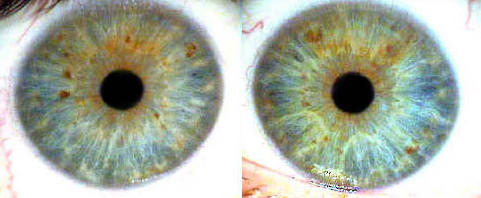The pupil is chronically small at all times. This indicates a constriction. It is stimulated by the parasympathetic nervous system. Primary cause of pupillary miosis can include opioids or narcotics, hypertension medications, horner syndrome, head injury, inflammation of the eye (anterior uveitis) and exposure to pesticides.
Constriction of pupils, or miosis, develops in the case of injury to or irritation of the vegetative innervation of pupils. This state can be verified if the diameter of the pupil is equal to or less than 2.5 mm (that is less than 21% of the iris diameter). There are two types of miosis: paralytic, depending on the injury of the pupil dilator due to the block of its sympathetic tracts, and spastic, connected with the spasms of the pupil sphincter as a result of its parasympathetic tract irritation.
Physiologic miosis depends on the following factors:
* Constitution (hyper-pigmentation of irises, parasympathicotonicity, balance of cholinergic and adrenergic systems)
* Age (the extent of wear of adaptive-protective forces of the organism, both metabolic and tissue, for example, iris atrophy)
* Vagotonic factors (the state of transitory parasympathicotonia: mental-physical fatigue, hyperventilation, sleep, periods after eating meals)
* Psycho-emotional state (mobilization of all forces of the organism, for example, an aggressive attack)
* Refraction factor (hypermetropes pupils are somewhat more narrow than in emmetropes, and in emmetropes more narrow than in myopes)
Pathological miosis appears under the influence of different factors, acting on the cortico-truncal vegetative centers:
* Exogenous intoxications (pharmacological – carbocholine, pilocarpine, eserine, pyrophose, morphine etc.; alcohol; carbon monoxide)
* Endogenous intoxications, causing comatose states (uremic, diabetic, alimentary, dystrophic)
* Astheno-depressive psychosis
* Acute violations of cerebral blood circulation
* Hypofunction of the vegetative nervous system, leading to the hypofunction of the other organs (for example, digestive tract)
Unilateral miosis is of great importance for topic diagnosis of injuries of the central nervous system, especially in the vertebro-basilar basin.
Many primary and secondary syndromes of the injury in these areas include: Bernard-Horner’s, Dejerine-Klumpke’s, Pancoast’s, Babinski-Naugeot, alternating bulbar Wallenberg-Zakharchenko’s etc.

